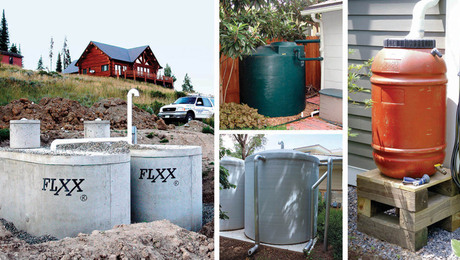Two Questions:
1. Do you install tile before the door jambs are installed or after?
2. What is the best way to handle the transition between a 1/2″ engineered wood floor and and a 3/4″ tile floor to accommodate the 1/4″ difference in floor height? Is T molding the only option?


















Replies
either way...
Personaly I'd prefer to tile then set the doors. In a remodel that's easy to do, but in new construction the doors usually get hung before the finished flooring.
You can set the door before tiling with the jamb held off the subfloor by the required height, or if you have a jamb saw or a multi-tool you can flush cut them as needed when you go to tile.
For the saddle transition, I'd prefer a marble saddle. You can use a hollywood threshold if you want a gradual slope, or a threshold with chamfered edges. Depends on which look you prefer. On the tile side, grout between the threshold and the tile. On the wood flooring side, use caulk.
Or you can use a wood threshold.
I'm not big on T-moldings unless it's a floating wood floor and a T is needed to cover an expansion gap.
There's a Norm trick I've used a couple of times: Place a piece of the tile next to the jamb, then use a backsaw (you remember those) laying flat on the tile to do the undercutting.
Generally the thickness of the backsaw is enough to compensate for a thin layer of thinset -- if you will be going thicker use a layer of cardboard or some such under the tile to match the thickness.
offset handle saw
That's what I usually use for a simple straight cut, a dovetail saw with an offset handle. No knuckle busting with the offset handle. If it's a trickier cut I'll use a multitool.
tony
It's up to you.
Cut the jambs to fit the tile/eng. hardwood if breaking in a doorway.
Or
Undercut the jamb to get the tile under it.
Look for an undercut saw (non power or power$) or if you have one-a Fein Multimaster type "multitool".
Here's a link to Schluter transitions. They are metal-look nice and do the job well. Several types to choose from.
http://www.schluter.com/137.aspx
or
If you'd rather have a wood that looks like your eng. floor-find a similar species and make your own that looks nicer than the usual T-molding or transitions.
T-molding isn't the only transition available from the flooring manufacturers, other styles might work for you with minor modification.
or if in a doorway-a more solid and wider pc. of similar wood-more like a threshold-slight ramp up and a rabbet to lip over the eng. floor.
or
cheap "carpet" metal-that might serve the purpose, be cheap and might look ok-in brash, nickel or "silver".
tile install
Hi Ant throught my experiance i think installing the tile first is a better job so you can get a perfect cut down at the bottom and you are not fighting the trim to get your tile under it. i would recommend using a sluder kerdi strip they have many transition pcs
I personally prefer to install tiles before door jambs because it makes it easier for the workers to work on the tiles near the door area and it also leaves you with clean door jambs at the bottom.
Sergio
Wouldn't you say that either way could be done right and admit that laying tile first oftentimes causes problems for the finisher?
Easy on the tile guy, easy on the carpenter. Pick one.
For a DIY, that doesn't do tile that often-sure, easier to lay the tile.
For a DIY that can do tile ok, but has trouble hanging doors and dealing with mis-aligned tiles-easier to set the jambs and undercut them.
An out of level floor makes undercutting the jambs after easier. Set the jamb with the head level and let the tile installer undercut it.
Tile Installation
Thanks to all for your input. I intend to install tile first and work around the tile.
Tile Installation
Thank you for your input on tile installation. In an earlier house, I used your technique, but did not account for a possible water leak from the undersink plumbing . How do you handle the sink area? Also do you install the cement board under the cabinets without the tile? Thank You
Cabinets are one place where it's good to put the tile in first if possible. You only need to carry the tile under for a few inches, but then you need to add spaceers where the interior supports will rest to match the thickness of the tile.
If you don't put the tile in first, sometimes you can remove the toe kick to tile, then trim it to fit and reinstall. (But on a lot of cabs the toe kick is pretty strongly wedded to the frame.)
Tile under cabs.......
This question comes up often and there's the usual personal preference for the remodeler.
Tile first then set cabs..............bitch if you want to change the floor covering down the line. Broken tile at cab edge-again, no easy task replacing it.
I have done both but explain to the homowners the options and advantages.
In most cases-the tile will remain until a cabinet change-but............
of all the work I've done-a facelift usually means counter and floor covering change-with cabinets waiting for a complete gut and new install. Then there's the modified major change-new floor, counter and change the doors and drawer fronts.
Benefit-those that want to slightly change the floor plan or those that need to remove some part of the original-bigger frig-remove side panel-get that outdated desk out of the kitchen and add real base cabs..............or install that new idea desk instead. Change the traffic pattern and add an island/remove the peninsula..............